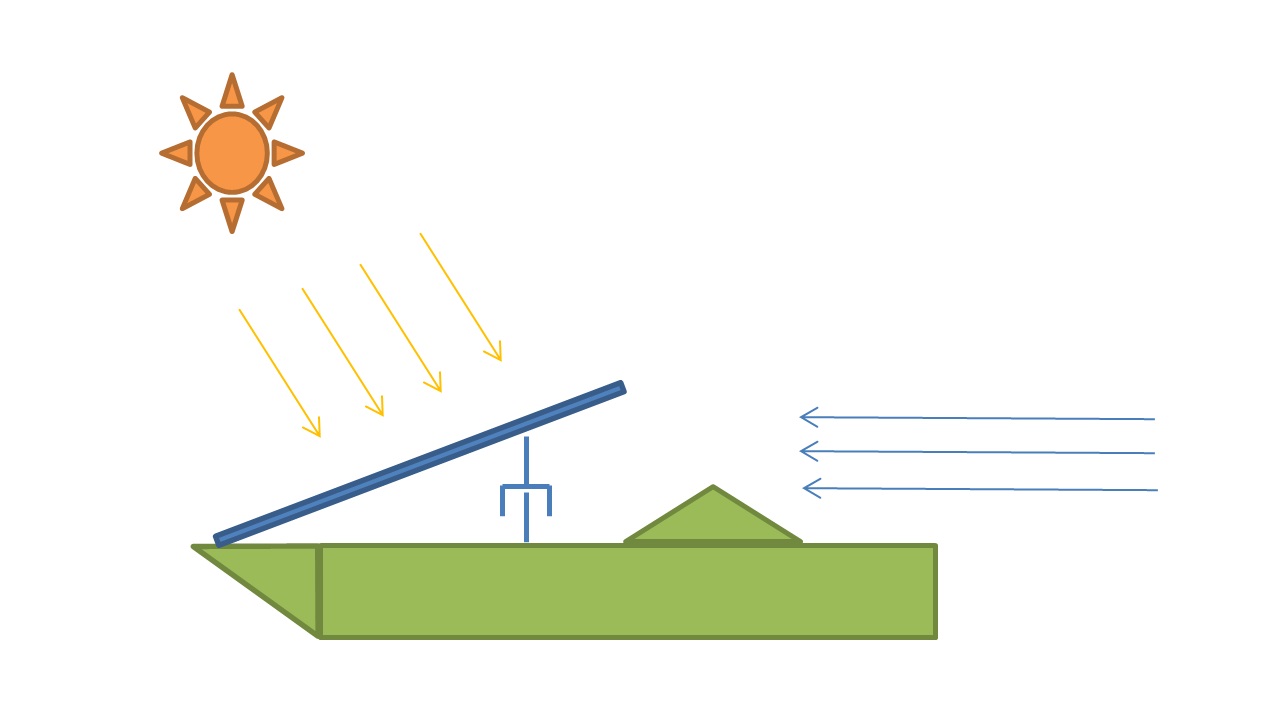It was three years ago when the Turnaor Planetsolar completed circumnavigating the globe (4th May 2012). It was the first boat of its kind to achieve this feat without any particle emissions, let alone Carbon dioxide. The boats legacy was not the many records it broke and set along the way but the promise it showed to usher in an era of sustainable transport.
International shipping emitted 796 million tonnes of CO2 alone in 2012 as compiled by a report by International Maritime Organization. This figure is about 2.2% of the global emissions for that year. If the shipping emissions figures are inspected in the domain of overall transport emissions, than the percentage rises to 12%. In terms of global emissions this represents a sizeable chunk of the total. To reduce the overall emissions shipping sector cannot be ignored.

Electric propulsion mechanisms have started to make inroads in transportation systems and are likely to make a dent in the emission figures in future. Most notable shift from fossil fuels based propulsion system can be seen in the form of electric cars. Similarly, the use of just renewable energy for transportation has been showcased by Solar Impulse aircraft. This has created ripples in the aviation industry. However, more promising application for sustainable transport is sea based transport for three main reasons:
- Size of panels can be accommodated with ease
- Weight of batteries is not a major issue
- Access to untrammelled wind/ solar resource
The Turanor was designed as a catamaran (two hulls) for stability. It should be noted that on a sea vessel, water drag is higher than air drag even though the exposed area to air is much larger than water. This is mainly due to the density difference between air and water. Water is almost 800 times denser than air. Following were the main features of the Turanor Planetsolar:
| Solar Panels Power | 93 kW |
| Solar Panels Area | 537 m2 |
| Electric Motors | 2 x60 kW |
| Max 1600 rpm | |
| Wieght of Battery Pack | 8500 kg |
| Max Speed | 14 knts ( 26 kmph) |
| Max Cruise Speed | 7.5 knts (13.9 kmph) |
It is evident that both the maximum speed and the max cruise speed are low compared to other catamarans. For example the Hawaii Superferry (also a catamaran) reaches over 35 knots even when fully loaded.
The Turanor was able to complete its globe tour in 584 days, a figure which does stoke much inspiration. This was mainly because of the several stops along the way and partly because of its slow speed. Nonetheless it was a ground-breaking success that should be built upon as not a single particle of CO2 was emitted throughout its journey. It is clear that if a newer model is built that is faster, the utility of such a vessel would increase several folds.
The Turanor 2.0
A notable design feature of the Turanor are the sliding solar panels. When fully extended, they cover an area of over 500 square meters. Lying flat, the only time the panel generate electricity to their full potential is during noon, i.e. when the sun is directly above them. This is because the panels receive incident solar radiation perpendicularly. During other times particularly near sunrise and sunset, the flat orientation of the panels lowers their electricity generation potential.
If the panels can be oriented in such a fashion that they receive solar insolation perpendicularly most of the time, than the output of the panels would be greatly improved. Even single axis tracking system on the panels can improve the output as much as 50%. Although 2-axis tracking can also be employed but the benefit in the output increase is small and the complexity and the cost of the tracking mechanism would be much higher.
The inclination of the panels also allows another opportunity. The power of wind could be harnessed by using inclined panels as a sail.
For such a prospect, a fixture would be required that can provide structural stability to accommodate let’s say panels of 15m x 15m. An actuator for lifting (as shown in the diagram below) the panels would also be required.
The calculations suggest that wind force on such a fixture inclined at an angle of 30 degrees would provide an additional 4.86 KN force. The current motors in the Turanor produce 12.91 KN of forward thrust force. Thus the wind force amounts to a 37% increase in propulsion power. The calculation was done with an assumed windspeed of 6 m/s, which is a conservative figure at sea.

Using the winds
The prevalent winds around the equator are well known (for e.g. the Westerlies and the trade winds). They were used for centuries before steamers came forth. If these winds are used in conjunction with solar tracking then the speed of this vessel can be greatly improved and journey times can be reduced. Furthermore, tracking systems also allow the solar boat to operate effectively at higher latitudes.

At present the Turanor is being researched as a vessel that can be used like a programmed automated drone to clear up the tonnes of non-degradable plastic present in the oceans. There are a multitude of other possibilities that have been opened up by the Turanor, an automated version of which would have no operating costs. A faster version of the same boat can be used for ferrying passengers and transporting goods. Let’s continue this journey of sustainable sea transport at it holds great potential in notching up our sustainability credentials.
